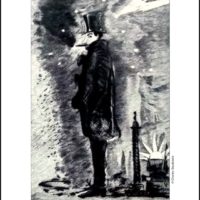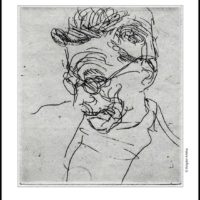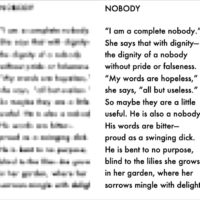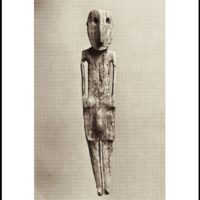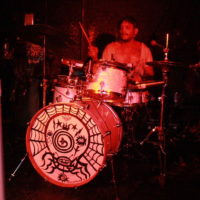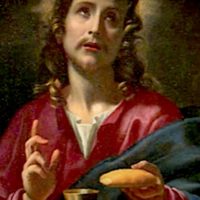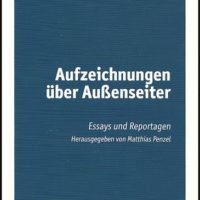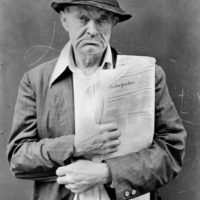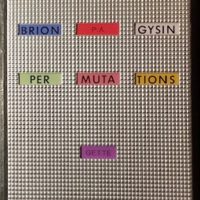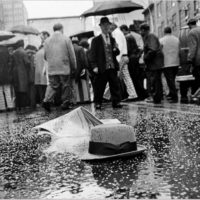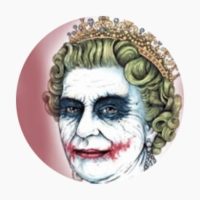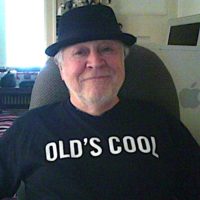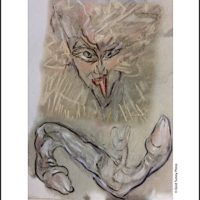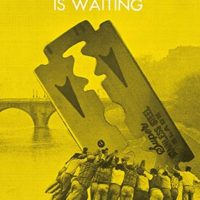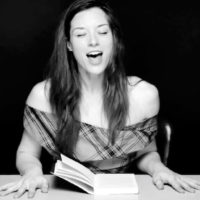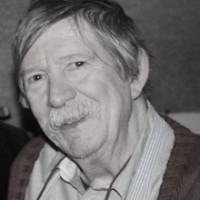Baudelaire drew his self-portrait under the influence of hashish (ca. 1842). As for me, ‘I wore no topcoat … / and no comet struck / me from a morbid sky … ‘
Samuel Beckett: ‘Spring’
‘The strange, gentle pleasures I feel at the approach of spring are impossible of expression, and if that is a sentence inviting ridicule, so much the worse for me.’ — Samuel Beckett
Becoming ‘Nobody’
“This seems about right at any time but especially in the time of #MeToo.” — Yakov Boyarsky
At the Gravesite = Small Animals
Cold Turkey Press sees it this way for a card to be published in a limited edition.
Gone But Not Forgotten
The Pyramid Club on the Lower East Side
Gone, finished, closed, shut forever. Though less well known than CBGB, Webster Hall, The Palladium, the Continental, it gave birth to much LES culture. Over the last few years, the Pyramid Club struggled to stay alive. Then came the Covid-19 death grip.
Transubstantiation
Christopher Hitchens Would Be Chortling
Words by Heathcote Williams. Montage and narration by Alan Cox.
Video redux for Easter Sunday 2021.
Carl Weissner’s German Essays and Reportage
Notes on Outsiders
UPDATED: To get the drift of “Aufzeichnungen über Aussenseiter” by Carl Weissner, I’ve been typing pieces of text into google translate. It’s a helluva time-consuming job, as if re-setting type you understand. Matthias Penzel, who edited the collection and wrote an afterword, tells me I should have better things to do with my time. But it’s more than worth the effort.
A Photo Portrait for the Ages
They don’t make characters like this any more unless you think of Trump’s sourpusses.
Rare Book Collecting
Connecting Brion Gysin and Paul-Armand Gette
UPDATED // To rate collectors by the use they make of their collections rather than simply by completeness, or by the rarity and excellence of individual items, makes great sense. Jed Birmingham’s new series about collectors of Burroughsiana is essential reading for anyone interested in the usefulness of collecting books of any kind, not just those by Williams Burroughs.
New Folio from Cold Turkey Press
The stone lion at the gate
wears a mask like mine.
This is where I used to wait
for books that bind,
that put my mind at ease.
From Bike Messenger to Filmmaker
Rich Allen’s ‘Street Shots / Hooky’
When a book begins like this, notice must be taken: “I woke up, New Year’s Day 1970, in a straitjacket. I had no memory, of anything, at least not at first. I was in an asylum on Long Island after taking an overdose of some pills a shrink gave me. Slowly awareness arose. … I asked to have the jacket removed and they did. Bit by bit memories came back. I could recall details of my childhood. I remembered I’d married Cathy, my girlfriend, months ago when she turned eighteen … In a few days I felt normal.”
Oprah Interview Misses the Bigger Picture
In all the press coverage I have seen of Oprah Winfrey’s interview with Meghan and Harry, it has been treated as a tale of personal tragedy, a terrible racist family squabble, for the British royals — but not one mention of the larger tragedy at the heart of Heathcote Williams’s “Royal Babylon,” namely the immense damage caused by the monarchy’s greedy, rapacious treatment of peoples and nations the worldover.
Gary Lee-Nova: ‘Oblique Trajectories’
A survey exhibition of the artist’s work over more than four decades.
The exhibition at the Burnaby Art Gallery in Burnaby, B.C., Canada, will run until April 18, 2021.
The Sleep of Dreams
A contemporary artist visualizes an idea by the 17th-century ‘father of modern philosophy.’
Moloko Print
Two New Books of Poems in Bilingual Editions
One by yours truly, “Your Obituary Is Waiting.” It’s a collection of “deformed sonnets,” with German translations by Gregor Pott and “flypaper collages” by Norman Ogue Mustill as counterpoint. The book design by Robert Schalinski, the paper, and the print quality are to die for, no pun. The other is “The Return” by William Cody Maher, also bilingual, with German translations by Walter Hartmann and photos by Signe Mähler, designed by Ralph Gabriel. And again the quality of the production is stunning. Furthermore, in a joint production, Moloko and Sea Urchin Editions have released “The Ex-Terr Poems” by Ed Sanders with his drawings, in an English-only edition, designed by Anneke Auer. I haven’t seen the book itself but I would bet the quality of the artifact matches the others.
Let’s Talk About Literary Exposure
Some would call it visibility. If you’re talking books, how about millions upon millions of Youtube views for a reading from Supervert’s ‘Necrophilia Variations.’ A dozen years ago when that video had two million views, I called it “viral reading.” Three years later, on Dec. 30, 2015, the video had 18.6 million views. Today it has some 28 million views. So what has this meant for selling the book?
Jim Haynes, RIP
Brad Spurgeon memorializes him: “End of an Era, but not of a Philosophy of Life.” I never met Jim. But he was extraordinarily welcoming when we corresponded by email about the strange case of Orwell’s typewriter.

